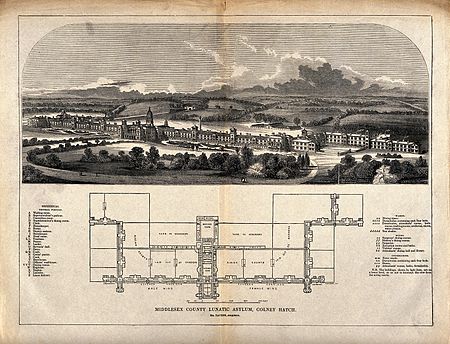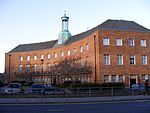Colney Hatch
Areas of LondonDistricts of the London Borough of BarnetPlaces formerly in MiddlesexUse British English from August 2015

Colney Hatch () is the historical name for a small district within the London Borough of Barnet in London, England. Colney Hatch refers to a loosely defined area centred on the northern end of Colney Hatch Lane (B550), which connects Friern Barnet with Muswell Hill, crossing the North Circular Road. The area is predominantly residential with a mixture of Victorian and Edwardian houses and much more recent development.
Excerpt from the Wikipedia article Colney Hatch (License: CC BY-SA 3.0, Authors, Images).Colney Hatch
Dudrich Close, London Friern Barnet (London Borough of Barnet)
Geographical coordinates (GPS) Address Nearby Places Show on map
Geographical coordinates (GPS)
| Latitude | Longitude |
|---|---|
| N 51.61054 ° | E -0.15575 ° |
Address
Dudrich Close
Dudrich Close
N11 3DW London, Friern Barnet (London Borough of Barnet)
England, United Kingdom
Open on Google Maps






